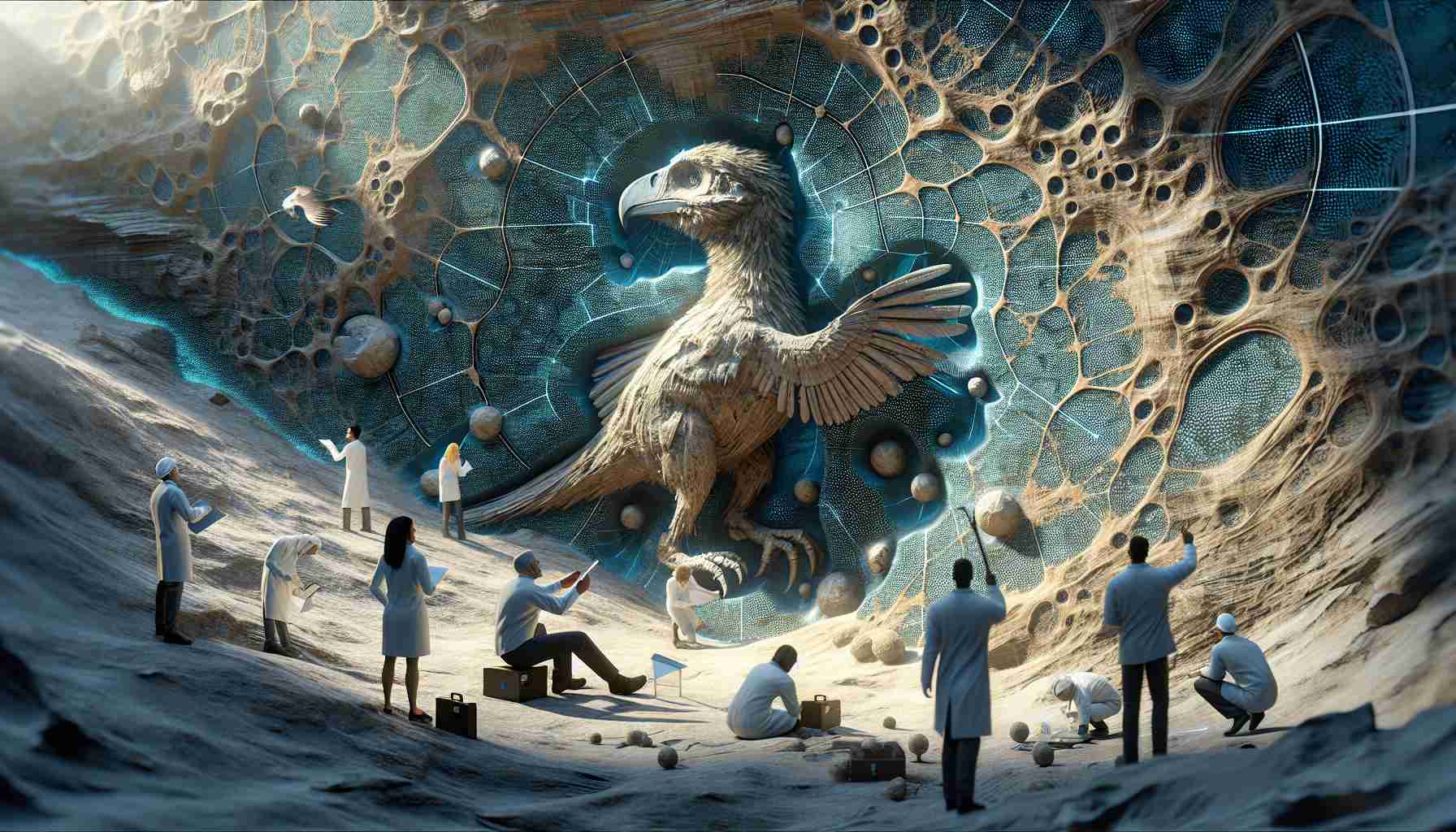A team of international scientists recently uncovered a remarkable discovery in Brazil, unearthing a fully intact and perfectly preserved bird skull that dates back over 80 million years to the Mesozoic era.
This groundbreaking find, showcased on the cover of the prestigious journal Nature, sheds light on the evolutionary journey of bird skulls and brains.
Birds, as the only group of dinosaurs to survive the mass extinction at the end of the Mesozoic era, have thrived and diversified extensively throughout the Cenozoic era.
Located in the region of Presidente Prudente in São Paulo, the bird fossil was named Navaornis hestiae in honor of Brazilian paleontologist William Nava, who discovered the fossil site.
The fossil of Navaornis has offered invaluable insight into the enantiornithine group of Mesozoic birds, bridging the gap between the ancient Archaeopteryx and modern avian species.
The study of Navaornis’ cranial structure, conducted by researchers from the University of Cambridge, highlighted its unique position in avian evolution, showcasing a blend of primitive and derived features.
Luis Chiappe, the lead researcher of the study, emphasized the significance of this discovery, noting how it provides crucial details on avian brain evolution and showcases unparalleled evolutionary convergence within early avian history.
This extraordinary fossil promises to serve as a pivotal tool for future studies on enantiornithine birds and the avian species of the Mesozoic era, offering a gateway to further unravel the mysteries of prehistoric avian evolution.
A recent development in the field of paleontology has brought to light additional fascinating aspects of the unprecedented bird fossil discovery in Brazil, revealing more insights into the ancient avian world.
One crucial question that arises from this discovery is: What specific adaptations distinguish Navaornis hestiae from other known enantiornithine birds of the Mesozoic era? Researchers have observed unique features in the cranial structure of Navaornis that set it apart, providing new perspectives on the evolutionary diversity within this group.
Another important query is: How does the discovery of Navaornis contribute to our understanding of early avian brain evolution? By examining the detailed anatomy of the bird skull, scientists can infer valuable information about the cognitive capabilities and sensory functions of these ancient creatures, shedding further light on their behavior and ecology.
Key challenges associated with studying such rare fossil finds include the delicate nature of the specimens and the potential limitations in obtaining full anatomical details due to preservation issues. Controversies may arise in the interpretation of certain features or evolutionary relationships, requiring rigorous scientific debate and analysis to reach consensus.
Advantages of this discovery encompass the opportunity to expand our knowledge of Mesozoic avian biodiversity and evolutionary patterns, providing a richer context for understanding the origins of modern birds. By comparing Navaornis to existing fossil taxa and living bird species, researchers can uncover evolutionary trends and adaptations that have shaped avian history.
On the other hand, disadvantages may include the scarcity of comparable fossil material for direct comparisons, hindering efforts to construct robust evolutionary scenarios. Interpretation biases or preconceived notions about avian evolution could also influence the analysis of the findings, underscoring the importance of critical evaluation and peer review in paleontological research.
For further exploration of related topics in avian paleontology, interested readers can visit Nature for additional articles on prehistoric bird discoveries and evolutionary insights. This reputable source offers a wealth of scientific publications that delve into the fascinating world of paleontology and natural history.
 Revolutionary AI Assistant Set to Transform Digital Interaction
Revolutionary AI Assistant Set to Transform Digital Interaction  Revolutionizing Mobile Technology with AI Assistants
Revolutionizing Mobile Technology with AI Assistants  Title: The Evolution of AI Assistants on Mobile Devices
Title: The Evolution of AI Assistants on Mobile Devices  Interstellar Pathways Unveiled
Interstellar Pathways Unveiled  The Toyota Yaris Cross: A New Frontier in Affordable SUVs
The Toyota Yaris Cross: A New Frontier in Affordable SUVs  Exploring a City with Google’s AI-Powered Tools
Exploring a City with Google’s AI-Powered Tools  Revolutionizing Virtual Assistants: A New Era of Interactivity
Revolutionizing Virtual Assistants: A New Era of Interactivity  Unprecedented Bird Fossil Discovery Unveiled
Unprecedented Bird Fossil Discovery Unveiled  Uncovering the Path to the Stars
Uncovering the Path to the Stars 